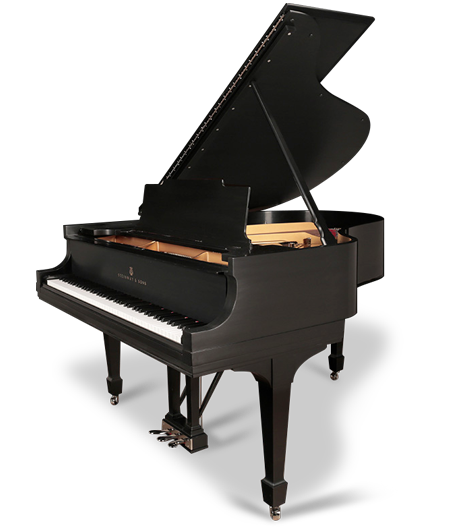Gulbransen Piano History
In 1904, Axel G. Gulbransen started his company with partners in Chicago, Illinois. [1] Moving to Deerfield only a few years later, the production of their player pianos began early as one of the only manufacturers to offer a regular-sized upright player piano and focused on player piano actions only for nearly a decade. For their line of player pianos, the company used the name “Gulbransen & Dickenson Co.,” which was incorporated in 1906.
Following the introduction of their player pianos, Gulbransen introduced the industry’s first electric organ in 1957. The catchphrase used to market the instrument was well-known at the time as, “So easy, a baby could do it!” [2] By 1964, Gulbransen was purchased by Seeburg, and five years later in 1969, stopped producing acoustic pianos altogether. Once a part of Seeburg, the company released one of the industry’s first rhythm machines, “"Seeburg/Gulbransen Select-A-Rhythm,” which was designed to imitate different sounds like cymbals, drums, and other beats.
A series of acquisition characterized the company throughout the rest of the 20th century. Today, the Gulbransen name is found on electronic keyboards and organs. [3]
Gulbransen Player Piano & Organ Technology
Gulbransen pioneered many changes to the player piano and electronic organs to move away from vaccuum tubes that powered the amplifiers to transistorized technology. In the mid-1900s, Gulbransen was one of the few companies navigating this new electronic technology and contributed to many innovations that became standard, including:
First transistor organ
First self-contained Leslie speaker system
First Chimes stop
First Piano stop
First automatic rhythm (actually Seeburg, with whom Gulbransen eventually merged)
First automatic walking bass
The Rialto K is the most well-known Gulbransen organ which has two 61-note manuals and a 25-note pedalboard. Many of these are still used today in churches and studios.
Restoring a Gulbransen Player Piano
Gulbransen player pianos were a major contributor to the piano industry in the early 1900s. They were perhaps the single-most-influential brand prior to the Great Depression. If you have a Gulbransen & Dickenson Co. player piano, the restored value may can range between ###-####.
To learn about how we restore player pianos, contact Lindeblad today.
References:
[1] Pierce, W. Robert. Pierce Piano Atlas: Anniversary Edition, 2017 Our 70th Year. Albuquerque: Ashley, 2017. Print.
[2] http://theatreorgans.com/hammond/keng/kenhtml/the%20gulbransen%20organ.htm
[3] http://antiquepianoshop.com/online-museum/gulbransen-gulbransen-dickenson-company/

